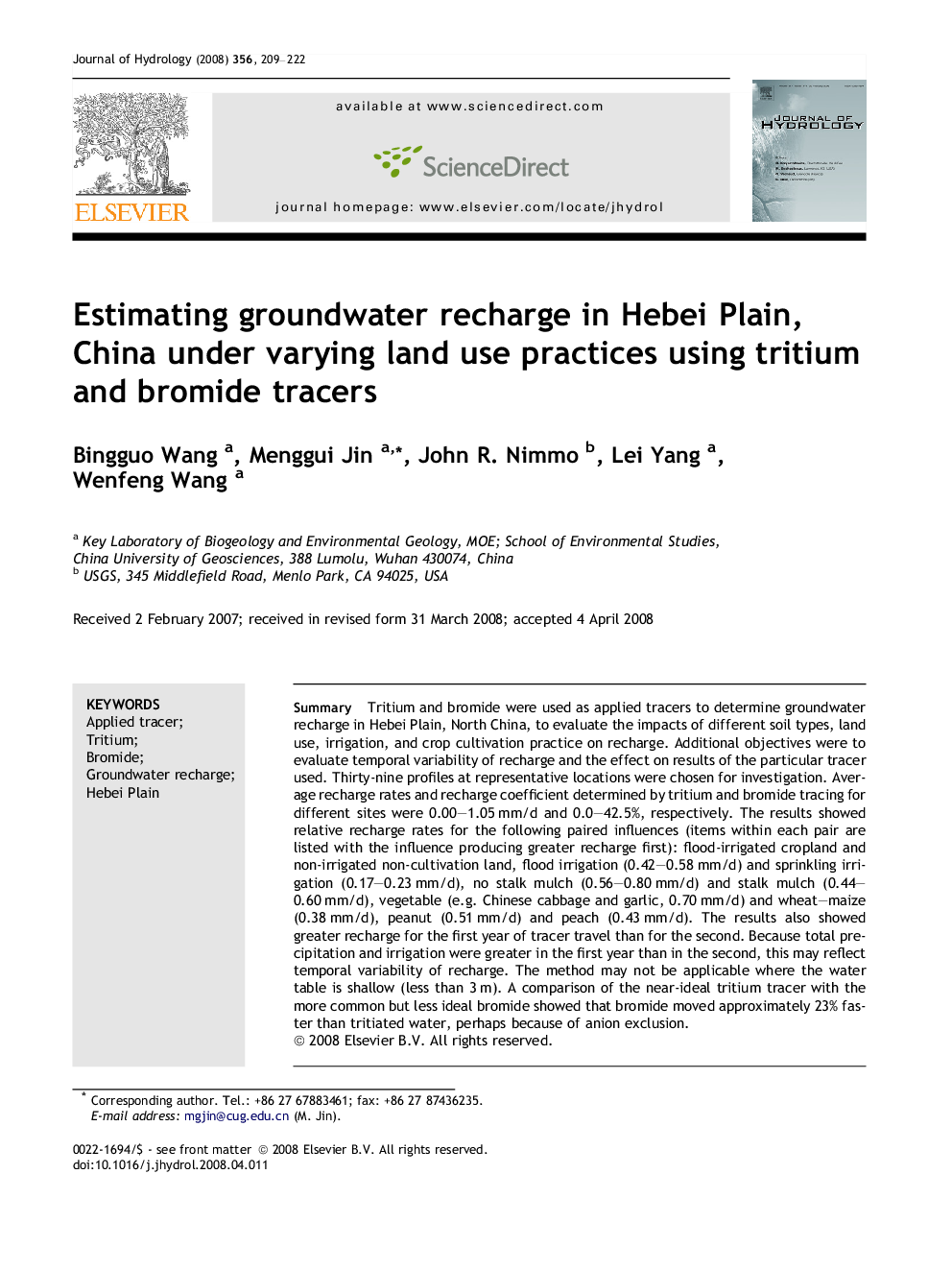| Article ID | Journal | Published Year | Pages | File Type |
|---|---|---|---|---|
| 4579460 | Journal of Hydrology | 2008 | 14 Pages |
SummaryTritium and bromide were used as applied tracers to determine groundwater recharge in Hebei Plain, North China, to evaluate the impacts of different soil types, land use, irrigation, and crop cultivation practice on recharge. Additional objectives were to evaluate temporal variability of recharge and the effect on results of the particular tracer used. Thirty-nine profiles at representative locations were chosen for investigation. Average recharge rates and recharge coefficient determined by tritium and bromide tracing for different sites were 0.00–1.05 mm/d and 0.0–42.5%, respectively. The results showed relative recharge rates for the following paired influences (items within each pair are listed with the influence producing greater recharge first): flood-irrigated cropland and non-irrigated non-cultivation land, flood irrigation (0.42–0.58 mm/d) and sprinkling irrigation (0.17–0.23 mm/d), no stalk mulch (0.56–0.80 mm/d) and stalk mulch (0.44–0.60 mm/d), vegetable (e.g. Chinese cabbage and garlic, 0.70 mm/d) and wheat–maize (0.38 mm/d), peanut (0.51 mm/d) and peach (0.43 mm/d). The results also showed greater recharge for the first year of tracer travel than for the second. Because total precipitation and irrigation were greater in the first year than in the second, this may reflect temporal variability of recharge. The method may not be applicable where the water table is shallow (less than 3 m). A comparison of the near-ideal tritium tracer with the more common but less ideal bromide showed that bromide moved approximately 23% faster than tritiated water, perhaps because of anion exclusion.
